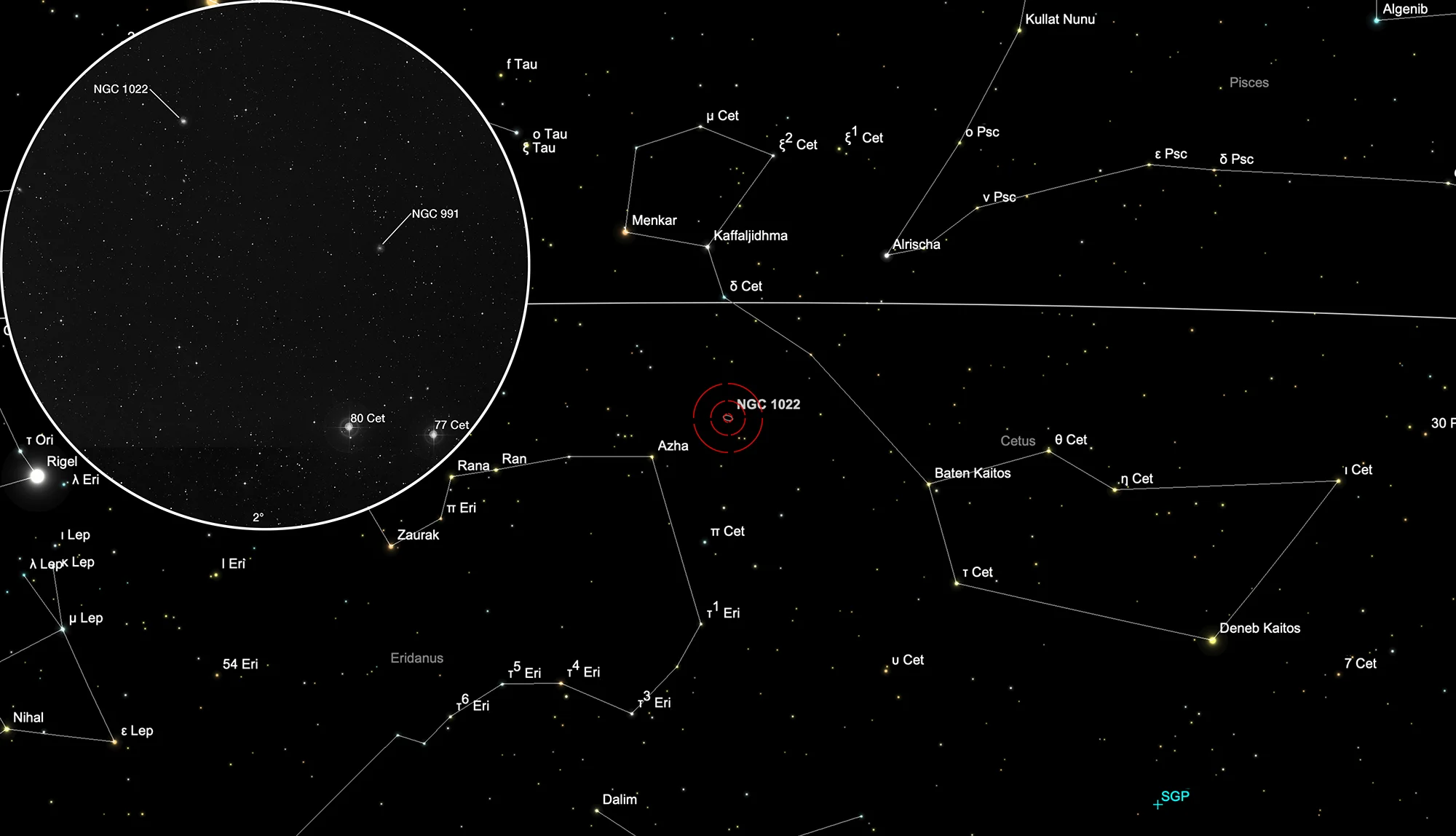Galaxies NGC 991 & NGC 1022
History
The galaxy NGC 1022 was discovered on 10 September 1785 by the German-British astronomer William Herschel with his 18.7 inch reflector telescope. He listed it as «bright nebula» I 102 and noted: «Considerably bright, pretty large, round, much brighter in the middle.» In the same night he also discovered NGC 991 (WH III 434) and noted: «Very faint, considerably large, of irregular figure, little brighter in the middle, 4 or 5' long, 2 or 3' broad.» [464]
Physical Properties
| Name | RA | Dec | Type | bMag | vMag | B-V | SB | Dim | PA | z | D(z) | MD | Dreyer Description | Identification, Remarks |
|---|---|---|---|---|---|---|---|---|---|---|---|---|---|---|
| NGC 991 | 02 35 32.6 | -07 09 18 | Gx (SBc) | 12.4 | 11.7 | 0.7 | 13.8 | 3 × 2.7 | 60 | 0.005110 | 21.58 | 18.800 | vF, cL, iF, vlbM | WH III 434; h 239; GC 570; MCG -1-7-23; IRAS 02330-0722; KUG 0233-073 |
| NGC 1022 | 02 38 32.5 | -06 40 39 | Gx (SBa) | 12.1 | 11.3 | 0.8 | 12.9 | 2.4 × 2.2 | 12 | 0.004847 | 20.47 | 18.500 | cB, pL, R, mbM, * 11 nf 2' | WH I 102; h 244; GC 574; MCG -1-7-25; IRAS 02360-0653 |
Finder Chart
The galaxies NGC 991 and NGC 1022 are located in the constellation Cetus. On 5 November these are in opposition to the Sun and cross the meridian at local midnight. Visible from your location in the months: July to April.
